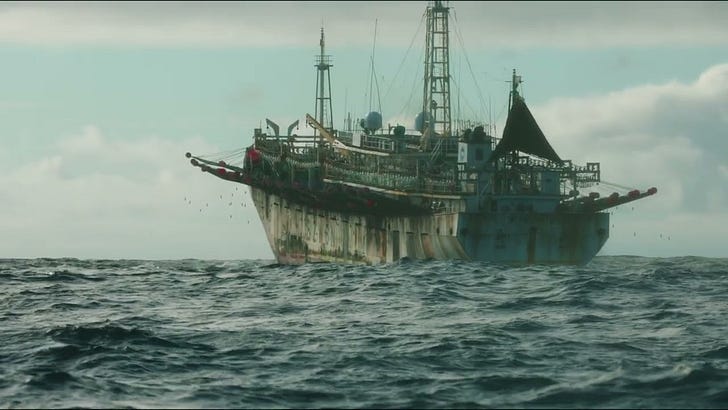China: Seafood Superpower
An exploration of the motivations and methods behind China’s growth and control over fishing across most of the high seas.
Our latest investigation focused on China because it has by far the largest high-seas fishing fleet and processes much of the world’s catch. China estimates that it has twenty-seven hundred distant-water fishing ships, though this figure does not include vessels in contested waters; public records and satellite imaging suggest that the fleet may be closer to sixty-five hundred ships. (The U.S. and the E.U., by contrast, have fewer than three hundred distant-water fishing vessels each.)
Much of our reporting focuses on labor abuses in the Chinese fleet. But Americans who eat seafood may also be implicated. More than 80 percent of the seafood consumed in the United States is imported. Much of that seafood has either been caught by Chinese ships or processed in China before it arrives in the U.S.
Here is an explanatory video that tells the story of China’s growth as a seafood superpower:
Almost a hundred years before Columbus, China dominated the seas. In the fifteenth century, China’s emperor dispatched a fleet of “treasure ships” that included warships, transports for cavalry horses, and merchant vessels carrying silk and porcelain to voyage around the Indian Ocean. They were some of the largest wooden ships ever built, with innovations like balanced rudders and bulwarked compartments that predated European technology by centuries. The armada’s size was not surpassed until the navies of the First World War.
But during the Ming dynasty political instability led China to turn inward. By the mid-sixteenth century, sailing on a multi-masted ship had become a crime. In docking its fleet, China lost its global preëminence. As Louise Levathes, the author of “When China Ruled the Seas,” told me, “The period of China’s greatest outward expansion was followed by the period of its greatest isolation.”
For most of the twentieth century, distant-water fishing—much of which takes place on the high seas—was dominated by the Soviet Union, Japan, and Spain. But the collapse of the U.S.S.R., coupled with expanding environmental and labor regulations, caused these fleets to shrink. Since the sixties, though, there have been advances in refrigeration, satellite technology, engine efficiency, and radar. Vessels can now stay at sea for more than two years without returning to land. As a result, global seafood consumption has risen fivefold.
China launched its first distant-water fishing fleet in 1985, when a state-owned company called the China National Fisheries Corporation dispatched thirteen trawlers to the coast of Guinea-Bissau. China had fished its own coastal waters aggressively. Since the sixties, its seafood biomass has dropped by ninety per cent.
Since then, China has invested heavily in its fleet and has now become the world’s undisputed seafood superpower. In 1988 it caught 198 million pounds of seafood; in 2020, it caught 5 billion. No other country even comes close.
China bolsters its fleet with more than seven billion dollars a year in subsidies, as well as with logistical, security, and intelligence support. For instance, it sends vessels updates on the size and location of the world’s major squid colonies, allowing the ships to coördinate their fishing. In 2022, I watched about two hundred and sixty ships jigging a patch of sea west of the Galápagos. The armada suddenly raised anchor and, in near simultaneity, moved a hundred miles to the southeast. Ted Schmitt, the director of Skylight, a maritime-monitoring program, told me that this is unusual: “Fishing vessels from most other countries wouldn’t work together on this scale.”


